Did you know that a vintage typewriter from the early 20th century can command a price tag of over $1,000 among collectors? The world of antique collectibles is a treasure trove of surprises.
In this article, we’ll embark on a journey into the enchanting realm of some antique collectibles. From the allure of vintage typewriters to the elegance of Art Deco furniture, we’ll explore the beauty and fascination these historical items hold. Along the way, we’ll also introduce some affiliate product suggestions to enhance your collecting experience.
Whether you’re a seasoned collector or just beginning to discover the charm of some antique collectibles, this article is your gateway to a world of timeless treasures waiting to be uncovered. So, let’s dive in and explore the captivating universe of these remarkable items.
The Fascinating World of Some Antique Collectibles
Some Antique collectibles, often simply referred to as “antiques,” encompass an extraordinary array of objects that have stood the test of time. These items are typically at least a century old, although some collectors may consider items from the mid-20th century as collectible too. What sets antiques apart is their historical, cultural, or artistic value, making them cherished relics of the past.
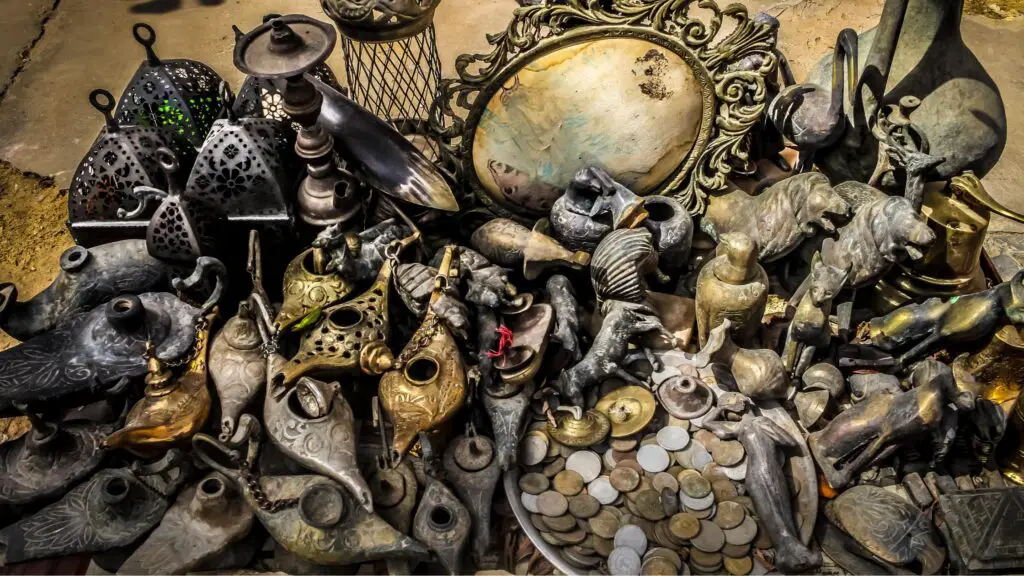
Consider, for instance, a pristine Victorian-era mahogany sideboard adorned with exquisite carvings, a testament to the craftsmanship of the 19th century. Or picture a delicate Ming Dynasty porcelain vase, showcasing the intricate artistry of ancient China. These treasures bridge the gap between generations, offering a tangible connection to history.
Historical Significance and Appeal
The allure of some antique collectibles lies in their historical significance and timeless appeal. Each item is a tangible piece of history, preserving the aesthetics, craftsmanship, and cultural nuances of its era. When you hold an antique, you’re not merely in possession of an object; you’re cradling a chapter from the past.
Take, for example, a well-preserved Renaissance-era tapestry. Beyond its intricate design, it narrates tales of the Renaissance period, from the flourishing arts to the political landscape of the time. Antique collectibles encapsulate the essence of yesteryears, making history palpable.
The Resurgence of Interest in Antique Collecting
In recent years, there has been a remarkable resurgence of interest in antique collecting. In an age characterized by rapid technological advancements and fleeting trends, many individuals are seeking solace in the enduring authenticity of antiques.
This revival in antique collecting can be attributed to a yearning for tangible connections to the past. Whether it’s a fascination with the opulence of the Gilded Age, the elegance of Art Nouveau, or the simplicity of Mid-Century Modern design, antique collectibles offer windows into the diverse tastes and aesthetics of different epochs.
The Benefits of Collecting Antique Items
Collecting antique items extends beyond the acquisition of beautiful pieces. It’s a journey of exploration, learning, and profound appreciation. Antique collectors become scholars in their own right, delving into the history, artistry, and craftsmanship of their chosen items.
Moreover, collecting antiques can be a rewarding investment. While values can fluctuate, many antiques appreciate over time, making them both a source of personal joy and a wise financial choice. Imagine owning a rare first edition of a classic novel or a vintage Rolex watch; these items often increase in value as they age.
As we venture deeper into the world of some antique collectibles, we’ll explore various categories, each with its own unique charm and intricacies. Whether you’re a seasoned collector or just beginning your journey, these insights will serve as your compass in the fascinating realm of antiques.
Types of Some Antique Collectibles
Furniture
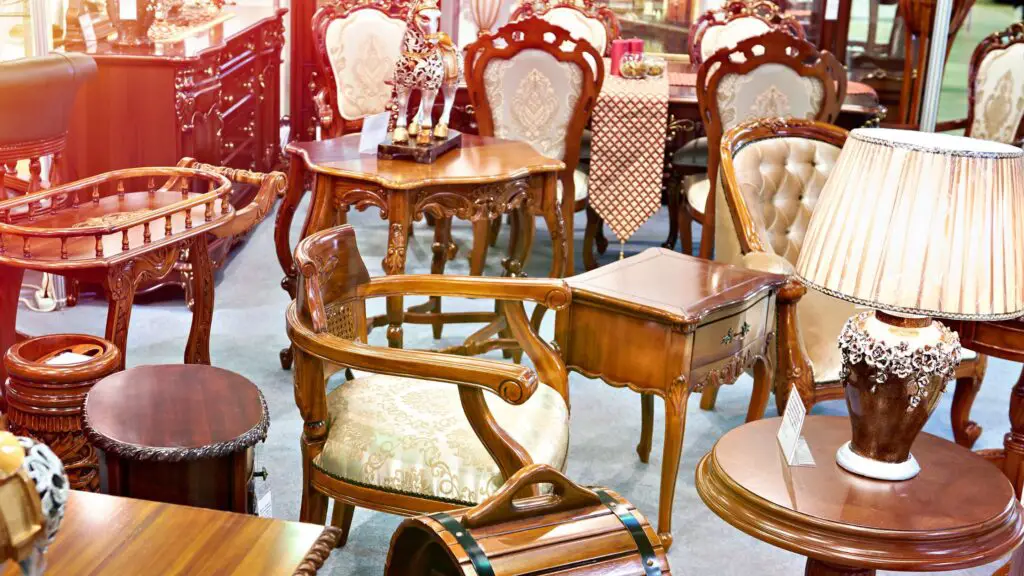
Overview of Antique Furniture as Collectibles
Antique furniture stands as one of the most captivating and sought-after categories in the world of collectibles. These pieces offer more than just functionality; they are exquisite expressions of artistry and craftsmanship. Whether you’re drawn to the opulence of Victorian furniture or the sleek lines of Art Deco, antique furniture holds an enduring appeal. Consider, for instance, a meticulously carved Chippendale dining table from the 18th century. Its ornate details and fine woodwork exemplify the pinnacle of Georgian craftsmanship. Antique furniture, like this table, transforms your living space into a time capsule of elegance and history.
Key Styles and Periods (e.g., Victorian, Art Deco)
Antique furniture spans a wide range of styles and periods, each with its distinct characteristics and influences. Knowing these styles can be instrumental in identifying and appreciating valuable pieces.
Victorian: The Victorian era is known for its ornate and extravagant furniture. Think of lavishly upholstered armchairs, intricately carved headboards, and heavy, dark wood. Victorian furniture reflects the opulence and romanticism of the 19th century.
Art Deco: In stark contrast, Art Deco furniture, which emerged in the early 20th century, embraces modernity and geometric designs. Pieces like streamlined coffee tables and chrome-framed chairs embody the Art Deco spirit.
Tips for Identifying Valuable Antique Furniture
Identifying valuable antique furniture requires a trained eye and an understanding of various factors. Here are some tips to help you on your journey:
Wood Quality: Examine the type and quality of wood used. Certain woods like mahogany, walnut, and oak are prized for their durability and beauty.
Construction Techniques: Investigate the construction techniques. Dovetail joints, hand-carved details, and hand-planed surfaces are signs of craftsmanship.
Patina: A genuine antique will often exhibit a natural patina from years of use and exposure. This aged surface adds character and value to the piece.
Provenance: Documentation or a known history of ownership can significantly enhance the value of antique furniture.
Hardware and Accents: Look at the hardware and accents. Original, intricate hardware or unique decorative elements can elevate a piece’s worth.
As you delve into the world of antique furniture collecting, remember that it’s not just about acquiring pieces; it’s about curating a living museum within your home. Each furniture item carries with it the echoes of a bygone era, inviting you to appreciate the artistry of the past while adding elegance to your present.
Porcelain and Ceramics
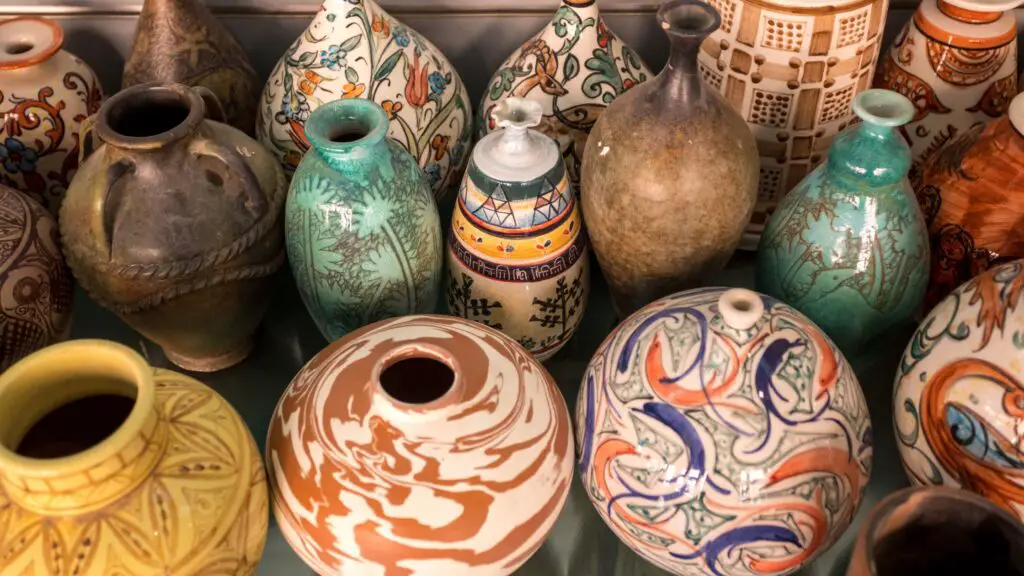
Introduction to Antique Porcelain and Ceramics
Antique porcelain and ceramics are a world of delicate beauty and historical significance. These collectibles have graced the tables and homes of people for centuries, bringing elegance and artistry into everyday life. Imagine sipping tea from an exquisitely painted Ming Dynasty porcelain teacup, where every sip transports you to ancient China. Such pieces hold stories of craftsmanship and artistry that transcend time.
Notable Manufacturers and Styles (e.g., Wedgwood, Ming Dynasty)
Understanding the manufacturers and styles is key to appreciating the diversity within antique porcelain and ceramics. Let’s explore a few:
Wedgwood: Founded by Josiah Wedgwood in the late 18th century, Wedgwood is renowned for its iconic blue and white Jasperware. These pieces often feature neoclassical motifs and have become collectors’ favorites.
Ming Dynasty: The Ming Dynasty (1368-1644) in China produced some of the most treasured ceramic artifacts in history. Their blue and white porcelain, characterized by intricate hand-painted designs, is highly sought after.
How to Assess the Condition and Authenticity of Ceramic Collectibles
When collecting antique porcelain and ceramics, assessing their condition and authenticity is paramount. Here’s a guide to help you:
Inspect the Glaze: Examine the glaze carefully. Authentic antique ceramics should have a consistent, aged glaze that may show some fine cracks, known as “crazing,” which is a positive sign of age.
Check for Maker’s Marks: Look for maker’s marks or stamps on the bottom. These can provide valuable information about the piece’s origin and age. For example, a genuine Ming Dynasty piece will bear a unique reign mark.
Handle with Care: Hold the piece and feel its weight. Genuine antique porcelain and ceramics are often delicate and lightweight due to the thinness of the material.
Examine the Painting: If the piece features hand-painted designs, closely inspect the details. Genuine antique ceramics tend to have intricate, precise artwork.
Seek Expert Appraisal: When in doubt, consider seeking an expert appraisal. Experienced appraisers can provide insights into the authenticity and value of your ceramic collectibles.
Collecting antique porcelain and ceramics allows you to immerse yourself in the artistry and history of different cultures. Each piece is not just an object; it’s a testament to human creativity and craftsmanship, a tangible link to the past, and a thing of beauty to be cherished in the present.
Coins and Currency
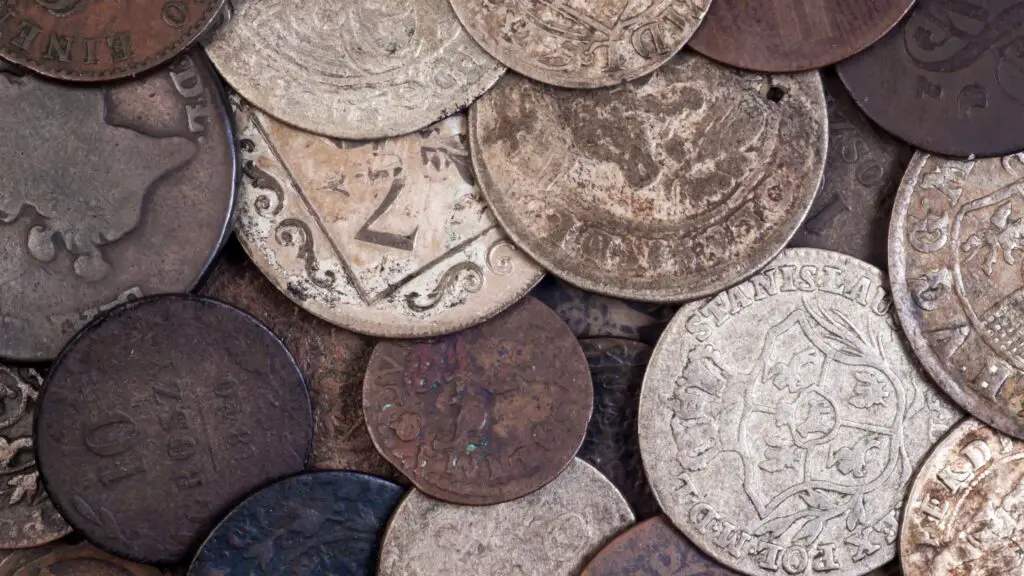
The Allure of Collecting Antique Coins and Currency
Collecting antique coins and currency is like embarking on a captivating journey through history, economics, and art. The allure lies in holding tangible pieces of the past, each with its own unique story to tell.Consider the thrill of owning a Roman denarius from ancient times, a coin that circulated when gladiators roamed the Colosseum. These tiny metal discs are time capsules, preserving the essence of their era.
Valuable Coins and Banknotes from Different Eras
Antique coins and banknotes come in an astonishing array of designs, denominations, and historical contexts. Here are a few examples of valuable collectibles:
Ancient Coins: Ancient coins, such as Greek drachmas or Roman sestertii, provide a fascinating glimpse into the civilizations of antiquity. Their value often depends on rarity, condition, and historical significance.
Rare Coins: Some coins gain immense value due to rarity or historical events. The 1909-S VDB Lincoln Cent, for instance, is highly sought after by collectors for its limited mintage.
Paper Currency: Antique banknotes, like the 1899 Black Eagle Silver Certificate or the 1918 $500 Federal Reserve Note, are prized for their intricate designs and historical relevance.
Collecting Tips and Resources for Coin Enthusiasts
If you’re considering collecting antique coins and currency, here are some tips to get started:
Research: Begin by researching different eras, denominations, and types of currency. Understanding the history behind these pieces will enhance your appreciation.
Authentication: Authenticity is crucial in this field. Learn how to identify genuine coins and banknotes, and consider investing in coin grading services for valuable items.
Join Collecting Communities: Connecting with fellow collectors can be immensely rewarding. Online forums and local coin clubs provide opportunities to learn, buy, sell, and trade.
Handle with Care: Antique coins and currency are delicate. Use proper handling techniques, such as wearing cotton gloves, to avoid damage from oils on your skin.
Storage: Invest in archival-quality storage solutions to protect your collection from environmental factors like moisture and temperature fluctuations.
Collecting antique coins and currency isn’t just about acquiring valuable items; it’s a passion that deepens your understanding of history and economics. Each coin or banknote holds a piece of the past, and as a collector, you become a guardian of these historical treasures.
Jewelry and Watches
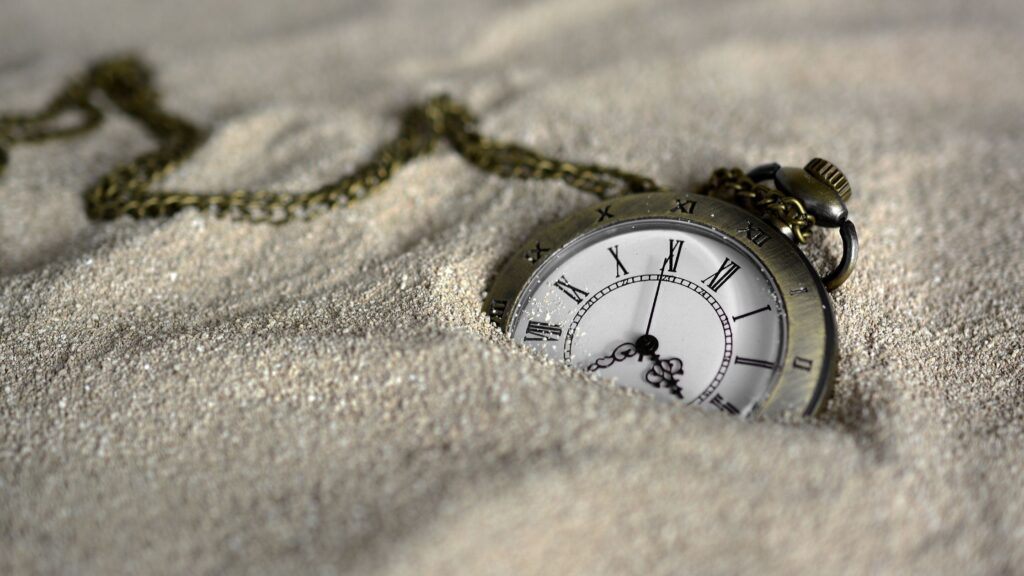
Exploring Antique Jewelry and Watches as Collectibles
Antique jewelry and watches are not just adornments; they’re wearable pieces of art and history. When you delve into this realm of collectibles, you’re embarking on a journey of elegance, craftsmanship, and timelessness.Antique jewelry encompasses a wide range of styles, from the intricate Art Nouveau pieces adorned with flowing curves and nature-inspired motifs to the geometric and bold designs of the Art Deco era.Antique watches, including elegant pocket watches, serve as both functional timekeepers and exquisite accessories. These timepieces often feature intricate engravings and mechanical movements that have stood the test of time.
Iconic Jewelry Styles and Timepieces
Let’s explore some iconic styles and timepieces that have left an indelible mark on the world of antique collectibles:
Art Nouveau Jewelry: Characterized by its sinuous lines and motifs inspired by nature, Art Nouveau jewelry is a testament to the artistic freedom of the late 19th and early 20th centuries.
Art Deco Jewelry: In contrast, the Art Deco period introduced geometric shapes, bold colors, and a sense of luxury. Think of the stunning cocktail rings and geometric brooches that define this era.
Pocket Watches: Antique pocket watches are miniature marvels of engineering and craftsmanship. They come in various styles, including open-face and hunter-case, and may feature intricate engravings on the case.
Guidance on Evaluating the Quality and Worth of Antique Jewelry
When collecting antique jewelry and watches, it’s essential to assess their quality and worth. Here are some considerations:
Materials: Examine the materials used. Precious metals like gold and silver, along with gemstones like diamonds, rubies, and sapphires, significantly affect the value.
Craftsmanship: Pay attention to the level of craftsmanship. Look for well-executed details, precise settings, and intricate designs. Handcrafted pieces often hold more value.
Condition: The condition of antique jewelry and watches is crucial. Minimal wear and well-preserved components can command higher prices.
Provenance: Items with documented histories or connections to famous jewelers or watchmakers can be especially valuable.
Authenticity: Ensure that the item is authentic and hasn’t been altered or modified over the years.
Collecting antique jewelry and watches allows you to wear and cherish pieces of history. Each piece tells a story of the era it represents, the craftsmanship of its creator, and the artistry of its design. It’s a journey that combines aesthetics, history, and a touch of luxury, making it a truly rewarding endeavor for collectors.
Art and Collectible Memorabilia

The World of Antique Paintings, Sculptures, and Memorabilia
When you step into the enchanting realm of antique art and collectible memorabilia, you embark on a journey through time and creativity. This category is a treasure trove of human expression, offering antique paintings, sculptures, and unique memorabilia items that transcend eras and cultures.
Antique Paintings: Antique paintings are like portals to history and culture. They encapsulate the artistic styles, emotions, and narratives of their periods. Imagine owning a 17th-century Dutch masterpiece that captures the Golden Age’s opulence or an Impressionist work that bathes your space in soft, dappled light.
Sculptures: Antique sculptures, crafted from materials like marble, bronze, or wood, breathe life into three-dimensional art. Whether it’s the exquisite details of a Renaissance sculpture or the bold abstraction of modernist pieces, each sculpture tells a unique story.
Memorabilia: Collectible memorabilia items are bridges to the past. These treasures can range from vintage documents, rare posters, autographs of historical figures, to original costumes from iconic movies. They offer a tangible connection to moments and personalities that have shaped history.
Famous Artists and Notable Memorabilia Items
Within this captivating world, you’ll encounter legendary artists and iconic items that have left an indelible mark on history:
Leonardo da Vinci’s Paintings: The genius of Leonardo da Vinci shines through timeless masterpieces like the enigmatic “Mona Lisa” and the awe-inspiring “The Last Supper.” Owning or appreciating these works allows you to delve into the mind of a true Renaissance polymath.
Ancient Sculptures: Antique sculptures like the graceful “Venus de Milo” or the dramatic “Laocoön and His Sons” transport you to ancient civilizations, where art celebrated beauty, mythology, and human emotions.
Historical Memorabilia: Collectors seek out historical memorabilia such as handwritten letters by notable figures, vintage movie posters, and sports memorabilia like a Babe Ruth-signed baseball. These items provide tangible connections to pivotal moments in history.
Advice for Preserving and Appraising Art Collectibles
Nurturing and safeguarding art collectibles is a responsibility and a passion. Here are crucial considerations for collectors:
Preservation: Create a stable environment to prevent damage from factors like temperature fluctuations, humidity, and exposure to light. Conservation efforts will help your art pieces remain vibrant through the years.
Authentication: When acquiring valuable art collectibles, consult experts and appraisers for authentication. Knowing the authenticity and provenance of an artwork ensures its historical and monetary value.
Appraisal: Regularly appraise your art collectibles to stay informed about their market value. This is crucial for insurance purposes and estate planning.
Documentation: Keep meticulous records of your art collectibles, including purchase receipts, appraisals, and any conservation work performed. Proper documentation enhances the provenance and value of your collection.
The world of antique art and collectible memorabilia is a captivating fusion of creativity, history, and culture. Whether you’re drawn to the strokes of a renowned painter, the craftsmanship of a sculptor’s masterpiece, or the historical resonance of a document, these treasures offer a profound journey into the heart of human expression and heritage.
For more art-related insights, including preservation tips and appraisals, as well as the latest news and updates in the world of art and collectibles, visit our ‘News & Updates’ section.
Where to Find Some Antique Collectibles?
Antique Shops and Markets
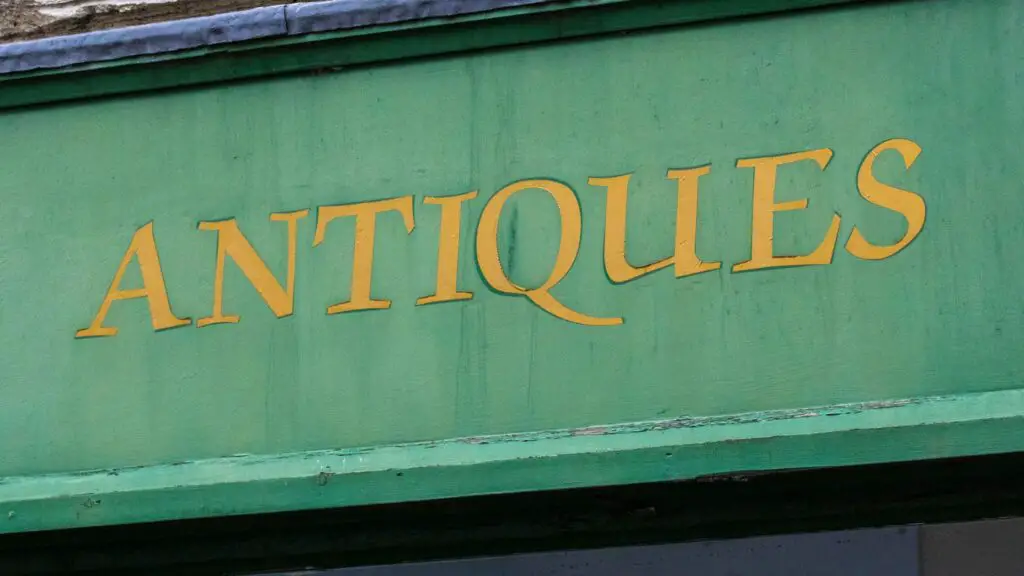
The Charm of Browsing Physical Antique Shops
There’s an undeniable charm in stepping through the creaking doors of a physical antique shop. The rich tapestry of history unfolds before you, each piece a chapter waiting to be explored. Here’s why antique shops hold an allure like no other:
Tangible History: Antique shops are like treasure troves filled with tangible history. Whether it’s a weathered leather-bound book from the 19th century or a gleaming Art Deco vase, each item carries a piece of the past. As you run your fingers over aged wood and delicate porcelain, you can feel the stories embedded in every crack and patina.
Personal Connection: Unlike online shopping, visiting a physical antique shop offers a personal connection with the items. You can hold an antique pocket watch, inspect its intricate engravings, and listen to the soft tick-tock of its gears. This sensory experience elevates the act of collecting to a deeply personal journey.
Expertise and Guidance: Antique shop owners are often passionate experts in their field. They can regale you with stories about the origins and histories of their wares. Engaging with these knowledgeable proprietors can enrich your understanding of the pieces you encounter.
Tips for Negotiating Prices with Antique Dealers
Negotiating with antique dealers can be an art in itself. Here are some tips to help you navigate this aspect of collecting:
Do Your Research: Before entering an antique shop, research the items you’re interested in. Understanding their market value and rarity will empower you during negotiations.
Inspect Thoroughly: Examine the item closely for any flaws, damages, or missing parts. This provides you with valid points for negotiation. If an antique dealer is aware of a flaw, they may be willing to adjust the price.
Be Courteous*: Approach negotiations with respect and courtesy. Dealers are more likely to work with you if you maintain a positive and polite demeanor.
Know Your Budget*: Set a budget for your antique shopping excursion and stick to it. This prevents impulsive purchases and ensures you acquire items that truly resonate with you.
Mention of Specific Regions or Cities Known for Their Antique Markets
Antique hunting often comes with the added thrill of exploring different regions and cities known for their vibrant antique markets. Here are a few renowned locations for antique enthusiasts:
Paris, France: The City of Light boasts a rich history of art and design, making it a hotspot for antique collectors. Stroll through the Marché aux Puces de Saint-Ouen, one of the world’s largest flea markets, to discover an array of treasures.
London, United Kingdom: London’s antique markets like Portobello Road and Bermondsey Antiques Market offer a diverse selection of antiques, from vintage clothing to rare books.
New Orleans, USA: The French Quarter in New Orleans is famous for its antique shops and galleries, where you can find unique Creole and Cajun pieces.
Kyoto, Japan: Kyoto’s antique district, Teramachi Street, is a haven for collectors of Japanese ceramics, textiles, and traditional crafts.
Visiting antique shops and markets in different regions not only allows you to expand your collection but also immerses you in the local culture and history. Each market has its own personality and specialty, ensuring that every antique hunting expedition is a unique adventure. For the latest updates on antique events and shows, visit our Events & Shows section
Online Marketplaces
The digital age has revolutionized the way we collect antiques. The convenience of shopping for antiques online opens up a world of possibilities, connecting collectors with treasures from every corner of the globe. Here’s why online marketplaces have become a haven for antique enthusiasts:
The Convenience of Shopping for Antiques Online
Embracing the online antique market brings a host of advantages:
Vast Selection: Online platforms offer an extensive range of antique collectibles. You can explore items from different eras, regions, and styles without leaving your home. Whether you’re seeking a rare coin, vintage jewelry, or an Art Deco lamp, you’re likely to find it online.
Global Reach: Online marketplaces transcend geographical boundaries. You can access items from international sellers and discover unique pieces that might be unavailable in local shops. This global reach expands your collecting horizons.
Convenience: Shopping for antiques online is convenient. You can browse listings, compare prices, and read descriptions at your own pace. Online platforms are open 24/7, allowing you to indulge your passion for antiques whenever it suits you.
Popular Online Platforms for Antique Collectors
Several online platforms cater specifically to antique collectors. Here are some well-known ones:
eBay: eBay is a global marketplace with a vast array of antique listings. You can find everything from vintage posters to antique silverware. Pay attention to seller ratings and descriptions for a smooth buying experience.
Etsy: Etsy is known for its unique and handmade items, including antique and vintage collectibles. It’s an excellent platform for discovering one-of-a-kind pieces and connecting with sellers who share your passion.
Ruby Lane: Ruby Lane specializes in antiques, fine art, vintage collectibles, and jewelry. It prides itself on offering high-quality items from reputable dealers.
1stdibs: 1stdibs caters to collectors of luxury and high-end antiques. It’s the place to find rare and exceptional pieces, including antique furniture, fine art, and jewelry.
Online Auction Houses: Many traditional auction houses now host online auctions, providing access to a wide range of antiques. Platforms like Christie’s and Sotheby’s regularly feature antique collectibles.
If you are looking for some websites for antique vendors you can read THIS BLOG to learn more.
How to Ensure Authenticity and Quality When Buying Online?
Buying antiques online is exciting, but it comes with its own set of considerations. To ensure authenticity and quality:
Research Sellers: Investigate the seller’s reputation and reviews. Look for established sellers with a track record of selling authentic antiques.
Request Documentation: Ask for documentation or provenance when available. Genuine sellers often provide certificates of authenticity or historical information about the item.
Examine Photos and Descriptions*: Scrutinize listing photos and descriptions carefully. Look for clear, high-quality images that showcase details. The description should include information about the item’s age, condition, and any flaws.
Ask Questions: Don’t hesitate to contact the seller and ask questions. Inquire about the item’s history, previous ownership, and any restoration work that may have been done.
Secure Payment Methods*: Use secure payment methods that offer buyer protection. PayPal and credit cards are often recommended for online antique purchases.
Shopping for antiques online can be a rewarding experience, offering access to a world of collectibles at your fingertips. By researching sellers, seeking documentation, and exercising diligence, you can confidently build your antique collection through online marketplaces.
For more insights into authentic antique collecting, read ‘Antique Wood Stove Identification’ as an example from our blog.
Caring for Antique Collectibles
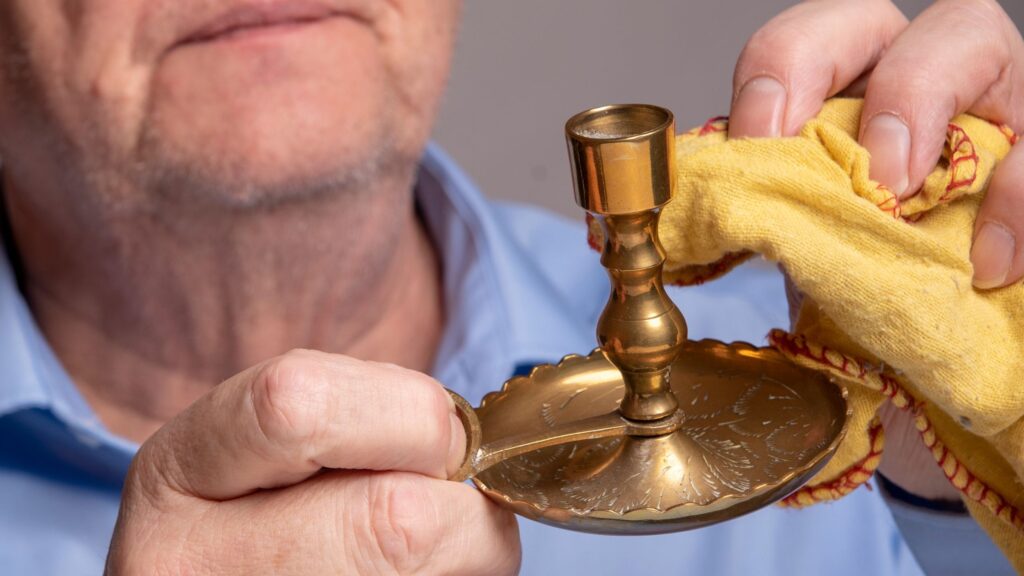
Antique collectibles are like bridges between the past and the present, each holding a piece of history within. To ensure these treasures remain vibrant and valuable, proper care is essential. In this section, we’ll delve into the art of caring for antique collectibles, covering two crucial aspects: Proper Storage and Display and Cleaning and Maintenance.
Proper Storage and Display
The Importance of Preserving Antique Items
Preserving some antique collectibles is not merely about protecting their physical integrity; it’s also about safeguarding their historical and sentimental value. These objects offer a glimpse into bygone eras, and as custodians, we must ensure they survive for future generations to appreciate.
Think of your antique furniture, porcelain, coins, jewelry, or artwork as delicate artifacts. Exposure to harsh environmental conditions, such as extreme temperatures, humidity, or direct sunlight, can accelerate their deterioration. Proper storage and display are the first steps in their preservation journey.
Guidelines for Storing and Showcasing Collectibles
Climate Control: Maintain a stable environment with controlled temperature and humidity levels. Fluctuations in these conditions can cause wood to warp, ceramics to crack, and metals to corrode. Consider using dehumidifiers or humidifiers, depending on your location’s climate.
Avoid Direct Sunlight: UV rays can fade colors and damage materials. Display your collectibles away from direct sunlight, or use UV-protective window films or curtains.
Avoid High Traffic Areas: Place your antiques in areas with minimal foot traffic to prevent accidental damage.
Use Appropriate Displays: Invest in quality display cases, shelving, or cabinets. These not only protect your items from dust and pollutants but also add an aesthetic touch to your home.
Proper Shelving: When displaying antique books or manuscripts, use bookshelves with adjustable shelves to accommodate varying sizes. Store books upright to prevent spine damage.
Mention of Climate Control and Protective Measures
Climate-Controlled Storage: Consider renting a climate-controlled storage unit if you have a sizable collection or live in a climate with extreme temperature and humidity variations.
Protective Covers: Use acid-free tissue paper, covers, or sleeves for books, documents, and textiles. Acid-free materials prevent deterioration and yellowing.
Cleaning and Maintenance
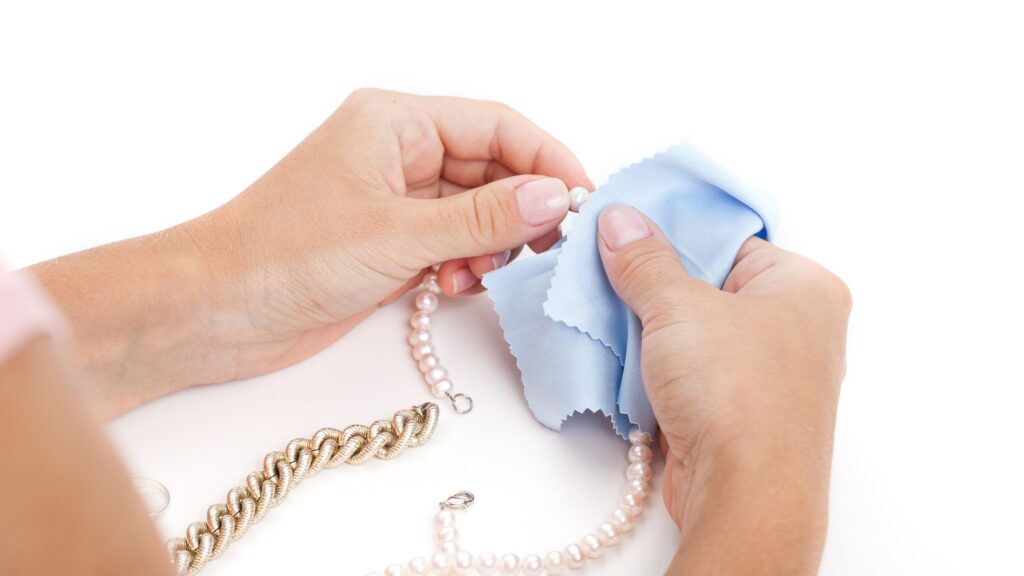
Techniques for Cleaning Different Types of Antique Collectibles
Cleaning antique collectibles requires a gentle touch and knowledge of specific cleaning techniques:
Furniture: Dust regularly and use a soft cloth or brush to clean. For delicate wood surfaces, opt for a wood cleaner that suits the era of your furniture.
Ceramics: Dust with a soft brush or use a damp cloth for light cleaning. Avoid immersing valuable ceramics in water unless necessary. Consult a professional for stubborn stains.
Coins: Handle coins with clean, dry hands to prevent oils from skin contact. Use a soft brush or compressed air for dust removal.
Jewelry: Clean jewelry gently with a soft, lint-free cloth. Avoid abrasive cleaners that can scratch metals or gemstones. For intricate pieces, consult a jeweler.
Art and Memorabilia: Dust framed artwork using a soft brush or microfiber cloth. Consult a professional conservator for cleaning and restoration.
Recommended Cleaning Products and Tools
Microfiber Cloths: These are ideal for gently wiping down delicate surfaces without scratching.
Mild Cleaning Solutions: Use mild, non-abrasive cleaning solutions designed for specific materials, such as wood, metal, or glass.
Soft Brushes: Soft-bristle brushes are excellent for removing dust from intricate or fragile items.
Warnings About Common Cleaning Mistakes to Avoid
Over-Cleaning: Excessive cleaning can lead to unnecessary wear and tear. Only clean when necessary.
Harsh Chemicals: Avoid abrasive or acidic cleaning products that can damage surfaces.
Submerging Valuables: Never immerse valuable items in water unless recommended by a professional conservator.
Improper Handling: Handle fragile items with care to prevent accidental drops or damage during cleaning.
Caring for antique collectibles is an art that requires a delicate balance between preserving their beauty and ensuring their longevity. By following proper storage, display, and cleaning practices, you can protect these treasures and continue to enjoy their timeless charm.
Appraising the Value of Antique Collectibles
In the world of antique collecting, understanding the value of your treasures is akin to holding a map to hidden treasure. This section will delve into the realm of appraisals, helping you grasp the significance of this process, find certified appraisers, and comprehend the various factors influencing the value of your antique collectibles.
The Significance of Appraisals
Unlocking Hidden Value: Antique appraisals are like the keys to a chest filled with the secrets of your collectibles. They provide you with a comprehensive understanding of the historical, cultural, and monetary worth of your items.
Insurance and Protection: Accurate appraisals are essential for insuring your collection. In case of loss or damage, you’ll have documented proof of your collectibles’ value, ensuring you’re adequately compensated.
Finding Certified Appraisers
Seek Accredited Appraisers: Look for certified appraisers who are members of reputable organizations like the International Society of Appraisers (ISA) or the American Society of Appraisers (ASA). These organizations uphold rigorous standards of ethics and expertise.
Local Experts: Explore your local area for appraisers who specialize in the types of collectibles you own. Their local knowledge can be invaluable in assessing regional market trends.
Online Resources: Online directories and databases can help you find certified appraisers in your area or those who specialize in specific collectibles.
Factors That Affect the Value of Antique Collectibles
Rarity: Rare items often command higher prices. Limited production runs, unique designs, or items with historical significance tend to be more valuable.
Condition: The condition of your collectibles is paramount. Items in excellent, original condition typically have a higher value. Restoration work can affect an item’s value, so it’s essential to disclose any repairs.
Provenance: The history of ownership, or provenance, can significantly influence value. Collectibles with documented connections to historical figures or events are highly sought after.
Age: Generally, older items tend to be more valuable. However, age alone is not the sole determinant of value.
Desirability: The popularity of certain collectibles can fluctuate over time. Stay informed about market trends to understand what collectors are currently seeking.
Building Your Antique Collectibles Collection
Starting or expanding your antique collectibles collection is an exciting journey. This section offers valuable tips for beginners, advice on developing a niche or specialization, and insights into networking with fellow collectors and enthusiasts.
Tips for Beginners
Research First: Begin by researching your chosen area of collectibles. Understanding the history, market trends, and common pitfalls is essential.
Start Small: Begin with modest purchases to gain experience and confidence. Over time, you can invest in more valuable pieces.
Network: Join local collector groups or online forums. Learning from experienced collectors can provide valuable insights.
To discover more helpful tips, tricks, and guides, be sure to explore our collection at our Guides & Tutorials category.
Developing a Niche or Specialization
Find Your Passion: Collectibles are more than investments; they should bring you joy. Focus on items that genuinely interest you.
Expertise: Becoming an expert in a specific niche can be rewarding. You’ll develop an in-depth knowledge that can aid in identifying valuable items.
Networking with Other Collectors and Enthusiasts
Attend Collector Events: Visit antique shows, flea markets, and collector exhibitions. These events provide opportunities to meet fellow collectors and learn from experts.
Online Communities: Engage with online collector communities on platforms like social media or specialized forums. Share your finds, seek advice, and connect with enthusiasts worldwide.
Building an antique collectibles collection is a journey that combines passion, knowledge, and a sense of history. Whether you’re a beginner or an experienced collector, these insights will guide you toward making informed choices and connecting with a vibrant community of fellow enthusiasts.
Our journey through the captivating world of Some Antique Collectibles has revealed a realm rich in history and artistry. Some Antique Collectibles aren’t mere objects; they’re windows to the past, offering a glimpse into craftsmanship, culture, and bygone eras.
These collectibles hold immense historical significance, bridging the gap between then and now, and igniting feelings of nostalgia and appreciation. They encompass a wide range, from intricate furniture to delicate porcelain and ceramics, all with unique stories to tell.
If you’re enchanted by Some Antique Collectibles, now is the perfect time to start your own collection. It’s a journey of discovery and connection with history. Begin by exploring local antique shops, auctions, or online markets. The thrill of finding a special piece and preserving history in your home awaits.
Collecting is more than a hobby; it’s a passion that enriches life and connects you with like-minded enthusiasts. Whether you’re into vintage coins, exquisite jewelry, or captivating art, there’s a world of Some Antique Collectibles waiting to be explored.
In our upcoming articles, we’ll delve deeper into the Some Antique Collectibles universe. Expect expert insights, care tips, and guidance for building your unique collection. Stay tuned for carefully selected affiliate products that enhance your collecting experience, from cleaning kits to display cabinets.
Join us on this Some Antique Collectibles adventure, whether you’re a seasoned collector or just starting. The world of Some Antique Collectibles offers endless discoveries. Happy collecting!
If you’re interested in exploring other fascinating antique collectibles, such as antique toys or rediscovering the radiance of antique oil lamps, don’t miss our dedicated blogs: Antique Toys and Rediscovering the Radiance: Antique Oil Lamps Illuminate a Bygone Era.
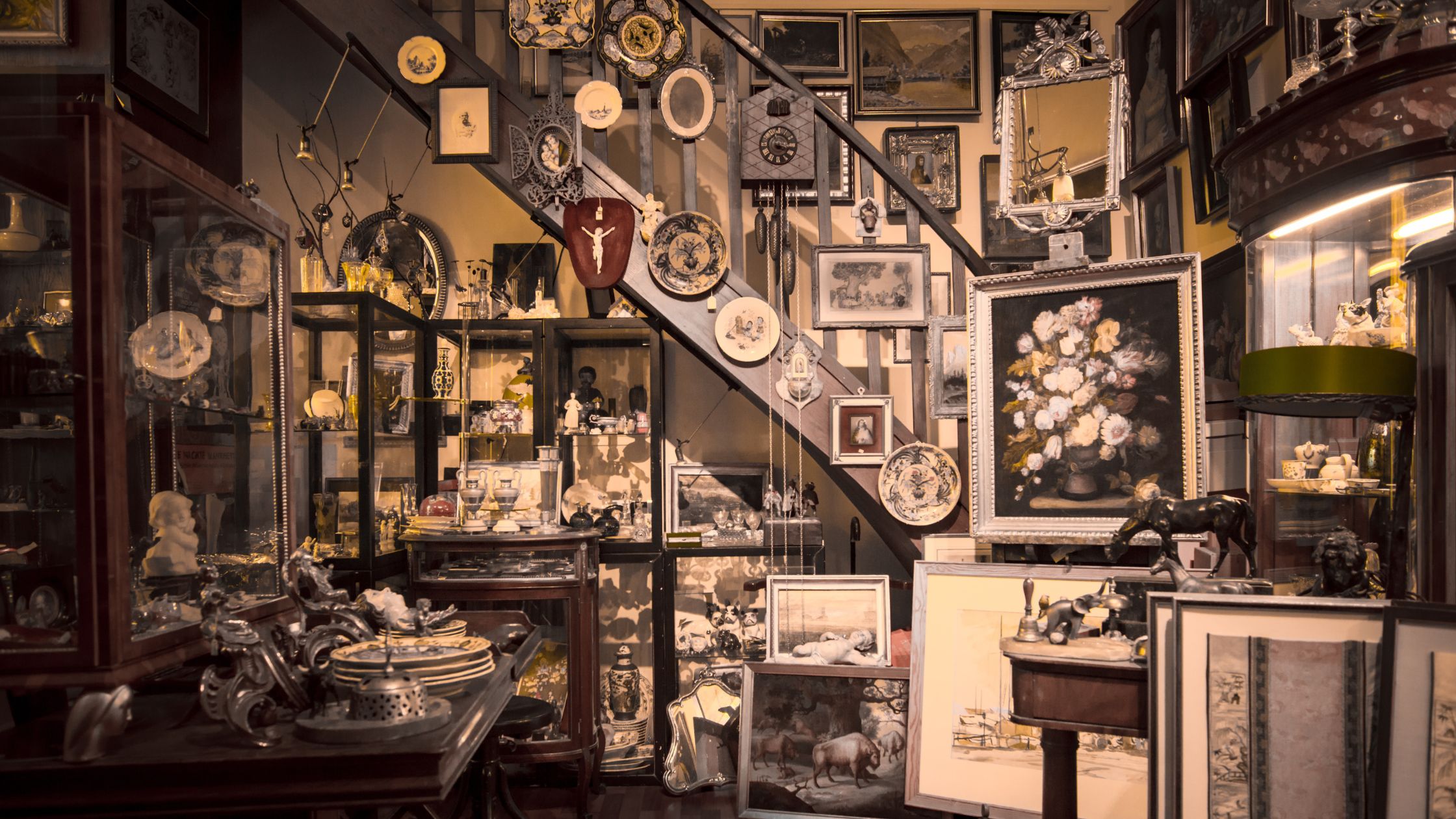
Leave a Reply